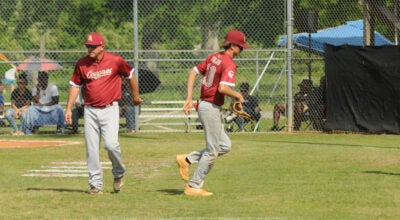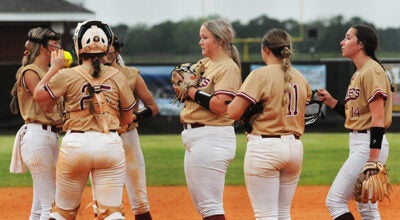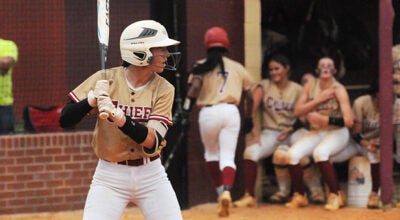Anglers aiming for Redfish
Published 12:00 am Wednesday, November 2, 2016
By David Rainer
Department of Conservation and Natural Resources
This has been a particularly productive year for anglers who target redfish along the Alabama Gulf Coast, and the Alabama Marine Resources Division is doing its best to ensure it stays that way.
When the Claude Peteet Mariculture Center in Gulf Shores was rebuilt from the ground up a couple of years ago, the first project for the included hatchery was to put it through a shakedown phase with one of the most popular species for inshore anglers. The red drum (redfish) is a species that is easily spawned in hatchery settings and can handle the rigors of being transported and released into the wild.
The results of that effort are now being realized with the release of redfish fry into backwater estuaries, where the baby redfish can thrive in a protected area and then move into the general species population when they become large enough to fend for themselves.
The largest release of redfish fry to date occurred earlier this week when almost 18,000 fry from an inch to an inch-and-a-quarter were released into the marsh that is connected to Little Lagoon in Gulf Shores.
We’ve been releasing redfish fry since we opened the hatchery two years ago,” said Chris Blankenship, Director of the Alabama Marine Resources Division (MRD). “We are also working to spawn Florida pompano and flounder for restocking efforts.”
“We’ve been releasing red drum fry at different locations around coastal Alabama, such as the Bon Secour River and Weeks Bay. This particular batch added 18,000 red drum into the marsh off of Little Lagoon. With it being the fall, this will give them a good chance to stay in the marsh grass and grow throughout the winter. After they overwinter here in the marsh, they can move into Little Lagoon and then go out the pass (Little Lagoon Pass on West Beach Road) into the Gulf of Mexico when they are ready.”
The excellent fishing for recreational anglers also translates into the easier capture of brood stock for the MRD hatchery.
“We’ve had a very good year for red drum from the Dog River area through Grand Bay and the Mississippi Sound, all the way through the Eastern Shore,” Blankenship said. “We’ve seen a lot of legal redfish in the (16 to 26 inches) slot. It’s been a really good year. I’m hoping that releasing fry like this will continue to build that fishery and continue the restocking efforts on the Gulf Coast.
“The good fishing also allows us to add new fish to the brood stock to change up the genetics a little bit. The brood stock will be overwintered in our tanks and they will be spawning all winter long. Then their fry will be released in the spring.”
Josh Neese, the hatchery manager at Claude Peteet Mariculture Center, said red drum was chosen as the initial hatchery species because of significant research done on the species and the success in spawning programs.
“This is a Sport Fish Restoration project,” Neese said. “Basically, we started off with red drum because it is a hardy species. We used them for the prototype, or guinea pig, for while we were ‘kicking the tires’ of the facility and testing parameters and how we need to operate the facility.
“Also, the homework has been done on red drum. Hatcheries in Texas, south Florida and South Carolina have been producing red drum for decades. So there is not a whole lot of research that is needed on behalf of growing these guys. It’s all been done, so that’s the reason we used red drum as a starting species.”
MRD has released multiple batches from the hatchery into the wild, but this week’s release was the largest to date.
“With each new batch, we improve our process to fine-tune the hatchery operation to increase survivability,” Neese said. “Hopefully, this will get our production up to a million red drum fry per year very soon as well as lead to success with pompano and flounder.”
Neese said the fry will reach 12 to 14 inches in about a year, and the female redfish will reach spawning age in two to three years and will likely be 16 to 18 inches long.
“They will grow exponentially until they reach maturity, when their metabolic budget will be focused on reproduction instead of somatic growth (body size),” he said. “They’ll continue to grow, but it won’t be at the same rate as before they reached maturity.”
The new Claude Peteet Mariculture Center could be a tourist attraction on its on with its state-of-the-art equipment and hatchery.
The original mariculture center was built in 1973 on 45 acres on the Intracoastal Waterway for the purpose of raising striped bass to be restocked in Alabama waters. Since that introduction, Marine Resources has researched and reared a wide variety of fish and crustaceans at the facility. Saltwater corrosion and wear and tear from a number of tropical storms and hurricanes had taken its toll on that facility.
Marine Resources used multiple funding sources to pay the bulk of the $9 million cost of the mariculture center. Funding was provided through the Coastal Impact Assistance Program (CIAP), the Gulf of Mexico Energy Security Act (oil production) and the Emergency Disaster Recovery Program (EDRP) associated with the Hurricane Katrina recovery efforts.
The new center has dedicated rooms for brood stock, strip-spawning and algae production. Large, walk-in coolers and freezers allow MRD to buy feed and necessary products in bulk to save money on operational costs, according to Blankenship.
The facility uses two saltwater pipelines to provide the proper salinity for the species being spawned. One pipeline is in the Intracoastal Waterway, where brackish water is pumped to the facility. The other pipeline extends to the Gulf State Park Pier for the higher salinity of the Gulf. Neese and his cohorts can mix the saltwater from the two sources to get the optimal salinity for the species that is being studied or spawned.
“MRD is also releasing 400 tagged red drum this week at different locations around Mobile Bay,” Blankenship said. “These fish are 10-12 inches long. This will help us track where the fish move and how well they survive after release.
“At the hatchery, we are also doing multiple research projects with the University of South Alabama and Auburn University. We have a lot going on to improve fishing opportunities for the people in Alabama and beyond. And the best news is we are just getting started.”





